View Mark Edward Harris' photos of Iran (Best viewed in Internet Explorer)
Last year, in the midst of the global tension over Tehran's nuclear ambitions, photographer Mark Edward Harris traveled to Iran to discover who Iranians are and see what their life is really like. As VOA's Faiza Elmasry tells us, his trips resulted in Inside Iran, the first contemporary photography book about a country little seen or understood by the West.
 |
| Harris says he traveled to Iran because he wanted to see what life there is really like |
Mark Edward Harris loves mixing work and adventure. His artistic curiosity has taken him on journeys to unusual places. In 2005, he visited North Korea. He shared his images of the people there and their lives in a book of photo essays, Inside North Korea. "It was really the State of the Union address of 2002, where President Bush named the so-called Axis of Evil," he says. "Something did hit me as not being right, clumping these three very diverse countries into this nomenclature. And so I started with North Korea." Then, last year, he turned his attention to another member of that axis - Iran.
 |
| Harris says his trip to Iran satisfied him, both as a professional photographer and an adventurer |
"I wanted really to get inside Iran and see what daily life was like there and try to separate the reality and the rhetoric as best as I could," he says. Harris spent more than a month in Iran, touring the heart of the country as well as the border regions so he could see as much of the country as possible. "I did realize that the best course to pursue was be to go through the center of Iran, to places such as Isfahan and Shiraz, Kerman, Yazd, Turan, to get a good first feel for the country," he says. "Then, based on that, I put together a second trip and went to the border areas. So, I went to Mashhad and to the Afghan border, up to the Caspian Sea. Then, we drove down through Hamadan, then off to the Iran-Iraq border."On his first visit, Harris traveled around by plane. But when he returned for a second trip, he was forced to go by car from the Caspian Sea all the way down to the Shatt al-Arab waterway.  |
| A fuel shortage canceled Harris' flight and forced him to drive from the Caspian Sea to the Shatt al-Arab waterway, giving him an unexpected chance to interact with Iranians |
"There was a real petrol shortage, which came as a surprise to me. They have plenty of crude [oil], but they don't have the refineries to process their own oil," he says. "So, they have to ship it out. So, there were major issues with that going on. Many flights were canceled, and we ended up driving, which was a blessing in disguise." He says driving gave him a chance to really interact with people. "Whatever else could be said about the very complicated issues we have between governments, I don't think you can find a more gracious group of people than the Iranians," he says. "People were extremely friendly. They wanted to engage in conversation. Many people, especially more in the cities and such, were upset with their government. I was surprised at that freedom of discussion there, having worked in North Korea, where nobody would dare speak against the government." Harris photographed whatever came his way. He says he wanted his pictures to tell the real story of Iranian society today.
![]()
" height=190 alt="Inside Iran is the first contemporary photography book on a country little seen or understood by the West
" hspace=2 src="http://www.voanews.com/english/images/3_bookcover.jpg" width=205 vspace=2 border=0> |
Inside Iran is the first contemporary photography book on a country little seen or understood by the West
|
"The cover photo is of a little girl in a market with her mother, who is wearing a [traditional] chador," he says. "She's got on faded jeans, which was sort of a style a year or two ago here, and a Mickey Mouse shirt. It was an interesting juxtaposition between the two." The photographer says he found Iranian women more open than he had expected. "[Iranian women are] very sophisticated, very well-educated," he says. "I was surprised by that and by their engagement. I'd say that I was approached more by women, in terms of wanting to engage and discuss and talk.  |
| Harris says Iran's architecture provided him with incredible material to photograph |
"In Isfahan, we met a group of five women on vacation. In this particular case, they would love to not have to wear hijabs [head scarves] to cover their hair. They were pulling back their hijab to reveal as much hair as they can get away with. They had very cool jeans and shoes, rings, makeup and whatever else they could get away with. Maybe their manteaus [coats] were a bit tighter than you are supposed to have there, to not reveal a woman's figure." Harris says he tried to capture the diversity of Iran, as reflected in its architecture.
 |
| One of Harris' favorite photos shows a man working in a henna factory in Yazd |
"One of my favorite photos is of a henna factory in Yazd," he says. "This henna factory has the light streaming through holes in the ceiling. The henna is being kicked up by a large stone wheel that's crushing the henna, kicking up this henna dust. It was the most surreal, timeless photo. "There is a shrine in Shiraz. It's just so magnificent, with cut glass in every corner so it's reflecting light everywhere. It was interesting in Shiraz to go to a Shia shrine and see how things were presented there, very ornate. It was also interesting to go to Hamadan, to the tomb of Mordechai and Esther [figures from Jewish history]. I met the Rabbi of Hamadan there and photographed in there. So you have these incredible architecture elements to work off."  |
| Three boys make their way across the countryard of Kerman's Friday Mosque |
Harris was surprised to see that the Iran-Iraq war of the 1980s remains a vivid part of the landscape - physically and psychologically. "Shatt al-Arab waterway, you see the remnants of the tanker battles that went on between 1980 to 1988 war between Iran and Iraq," he says. "What's interesting in talking with people there and going to all these shrines with all the martyrs there of that war, that is so much on the minds still of the people there. War is very real to them, that experience of 1980 to 1988 will always be a big part of their formulation of policy and thinking."
Award-winning Iranian filmmaker Abbas Kiarostami wrote the book's foreword, praising Mark Edward Harris' extraordinary eye for the "life" in all his subjects. Harris says he is happy that he was able to do that, adding that his trip to Iran satisfied him, both as a professional photographer and an adventurer.



















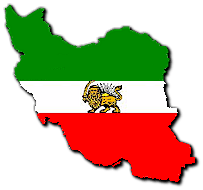











 اخبار مربوط به زندانیان سیاسی و نقض حقوق بشر
اخبار مربوط به زندانیان سیاسی و نقض حقوق بشر




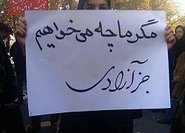




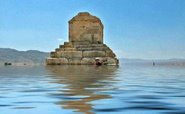






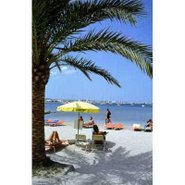
 Tulips in Holland
Tulips in Holland
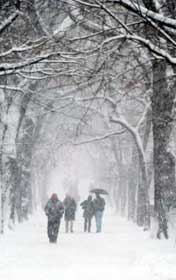











No comments:
Post a Comment